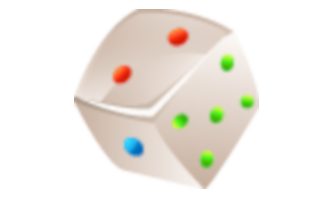Properties of matter and Energy
Science, Grade 5
Properties of matter and Energy
Study Guide

Properties of matter and Energy
Flash Cards

Properties of matter and Energy
Quiz

Properties of matter and Energy
Worksheets

Properties of matter and Energy
Games

Study Guide Properties of matter and Energy Science, Grade 5
❮
1
/
3
❯
PROPERTIES OF MATTER AND ENERGY What is matter? Matter is anything that takes up space and has mass. Properties of Matter Mass Definition: the amount of matter in an object Tool for measuring: pan balance Volume Definition: the amount of space an object takes up Tool for measuring: graduated cylinder Weight Definition: the measure of the pull of gravity on an object Tool for measuring: spring scale Density Definition: how much matter is found in a certain space or how much matter is packed together; density depends on mass and volume Lesson Checkpoint: What is the difference between mass and weight? Special Properties of Matter Some matter has the capability of conducting energy, such as wires which conduct electrical energy. Some matter insulates against energy, such as a wood handle on a pot that insulates against heat energy so that you can hold a hot pot using the wooden handle and not get burned. Other properties of matter include magnetism which is the property of being magnetic (attracting iron or steel) and buoyancy, which is the ability of an object to float. © Copyright NewPath Learning. All Rights Reserved. Permission is granted for the purchaser to print copies for non-commercial educational purposes only. Visit us at www.NewPathLearning.com.
Energy Energy is the ability to do work. Kinetic energy is energy that is happening now; it is energy in motion. The faster an object is moving, the more kinetic energy it has. The more mass an object has, the more kinetic energy it will have. Kinetic energy can change forms. For example, kinetic energy can change into heat energy when you rub your hands together. Potential energy is energy that is waiting to happen; it is stored energy. Examples of potential energy include a rubber band being pulled back or someone sitting on the top of the slide – both have the potential to move, but have not moved just yet). Lesson Checkpoint: What is kinetic and potential energy? Forms of Energy Electrical Energy Electrical energy is the movement or flow of charged particles that care called electrons. Examples of electrical energy are electricity and lightning. Thermal Energy Thermal energy is energy related to heat. An example of thermal energy is geothermal energy, which is beneath the surface of the earth. Chemical Energy Chemical energy is energy stored in the bonds of atoms and molecules. It’s the energy that holds these particles together. Mechanical Energy Mechanical energy is the energy an object has due to its motion or due to its position. Mechanical energy can be either kinetic energy (energy of motion, like a rolling ball) or potential energy (stored energy because of an object’s position, like an arrow pulled back in a bow). Radiant Energy Radiant energy is energy that travels in the form of electromagnetic waves. Radiant energy includes visible light, x-rays, gamma rays, and radio waves. Lesson Checkpoint: Describe one form of energy. © Copyright NewPath Learning. All Rights Reserved. Permission is granted for the purchaser to print copies for non-commercial educational purposes only. Visit us at www.NewPathLearning.com.
How does heat get transferred? • By conduction which is the transfer of heat between two objects that TOUCH. For example: When a metal spoon is put inside a cup of hot chocolate, heat travels from the hot chocolate to the spoon because the two are touching and because metal is an excellent conductor of heat. • By convection which is the transfer of heat through liquid or gas. An example of this is a heated pool. • By radiation which is the transfer of heat through electromagnetic waves, such as radiation inside a greenhouse. Lesson Checkpoint: What is one way heat can get transferred? © Copyright NewPath Learning. All Rights Reserved. Permission is granted for the purchaser to print copies for non-commercial educational purposes only. Visit us at www.NewPathLearning.com.
